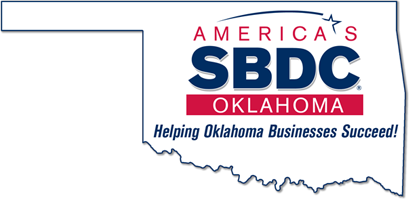Fringe Benefits
An Original Article from SBA.gov
You love your staff and want to show it by giving them more in a tangible way. Increasing their pay may not be the best strategy for you or your employees. Added pay is taxable to employees, so they net less (how much less depends on their tax bracket). And added pay has additional costs to you in the form of payroll taxes. What to do? Think about giving them fringe benefits.
Overview
You’re not obligated to provide any benefit (starting in 2014, employers with more than 50 full-time employees will have to provide health coverage or pay a penalty for not doing so). If you choose to give fringe benefits, it’s a win-win for you and your employees:
- You reward your staff without incurring additional employment taxes, such as the employer’s share of FICA (covering Social Security and Medicare taxes) and state unemployment insurance. Some benefits won’t even cost you a penny because you merely arrange for workers to buy them on their own with favorable tax results to them (explained later).
- Your employees get valued benefits that do not increase their taxable pay. If they’d had to buy these benefits on their own, they would have had to earn enough, after tax, to cover the cost. For example, say you offer dependent care assistance of $2,500 annually for all employees. If an employee in the 25% tax bracket had to pay this cost on her own, she should have had to earn about $3,350 more in wages to cover this cost.
If you provide any fringe benefits, you must do so on a nondiscriminatory basis (with few exceptions). This means that benefits cannot go merely to owners and highly-paid employees; they must be available to rank-and-file employees as well.
Tailor your benefits plans to the needs of your staff and to your pocketbook. Remember that health coverage and retirement plans are the top two most-valued employee benefits.
Transportation fringe benefit
Employees know that their commuting expenses are not deductible, regardless of the length of the commute or how much it costs. However, you can pay for certain transportation fringe benefits that will be tax free to employees. For 2013, transportation fringe benefits are:
- Free parking, transit passes and vanpooling up to $245 per month
- Bicycle assistance (to maintain and store the bicycle) up to $20 per month
Alternative: Instead of paying these benefits, you can arrange for employees to pay for them on their own on a pre-tax basis (i.e., the portion of their wages used to pay for the benefits don’t count as taxable income). Your cost: only minimal administrative costs. For more about this, look at *TransitChek or the websites of other companies that arrange for transportation fringe benefits.
Child-related benefits
You can help your staff with family obligations in a tangible way by paying some child-related costs:
- Dependent care assistance. You can pay up to $5,000 of assistance for each employee each year; this amount is tax free. Alternatively, you can enable workers to pay for their dependent care needs on a pre-tax basis by setting up a dependent care flexible spending account (FSA). The funds in this FSA cannot be combined with funds in a medical FSA.
- Adoption assistance. You can pay up to $12,970 for adoption assistance in 2013 (the limit increases annually for inflation).
Small employers may not be able to offer these benefits and enjoy them personally. The law prevents “highly-compensated employees” (e.g., owners) from excluding company-paid benefits if the plan skews benefits toward them. In other words, the plan must be nondiscriminatory for all workers.
Cafeteria plan
Workers usually prefer to have a menu of benefits from which they can choose. A cafeteria plan lets employees choose between cash (or taxable benefits) and tax-free benefits; they are not taxed on the tax-free benefits merely because they could have opted for cash. Some of the benefits you can offer under the plan include:
- Adoption assistance
- Athletic facilities
- De mimimis (minimal) benefits
- Education assistance
- Employee discounts
- Employer-provided cell phones
- Health benefits
- Meals
- Moving expense reimbursements
- No-additional-cost services
- Transportation commuting
- Working condition fringe benefits
As a small employer (no more than 100 employees), you can opt to use a simple cafeteria plan. A simple cafeteria plan is presumed to be nondiscriminatory. You must make minimum contributions (e.g., at least 2% of worker’s pay) to workers in the plan who are not highly-compensated employees; all employees can enjoy benefits under the plan. Your contributions to the plan are tax deductible.
You can find more about cafeteria plans in IRS Publication 15-B, Employer’s Tax Guide to Fringe Benefits. (The 2013 version is not yet out but should be shortly.)
Conclusion
Whether you offer benefits, what they are, and how much you pay depends on your company’s financial situation. Obviously, you can only do what you can afford to do, no matter how generous you may want to be. Always discuss your benefits plans with a knowledgeable tax advisor.
*denotes non-government website




